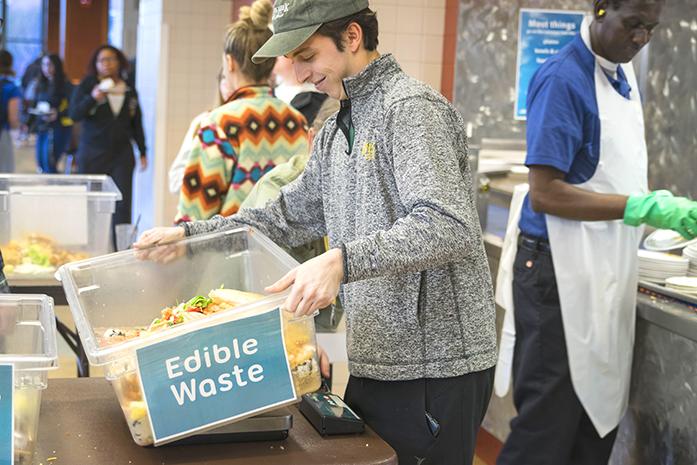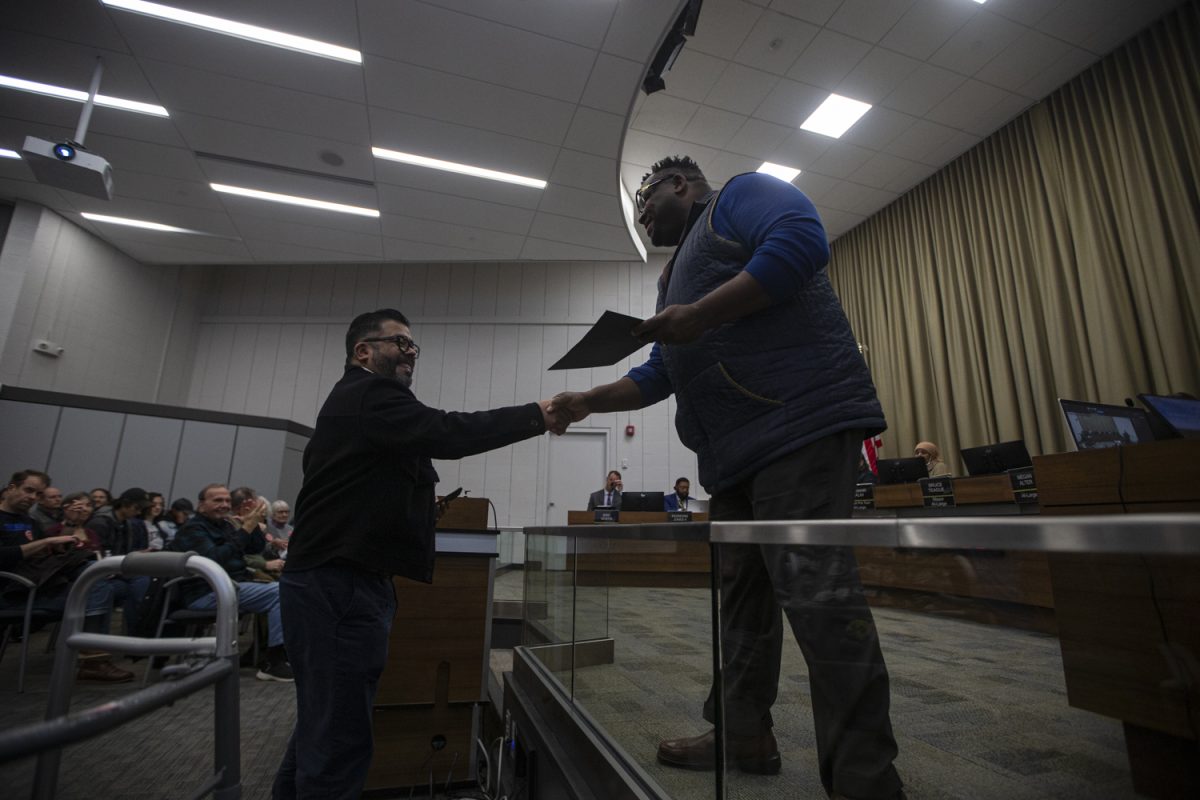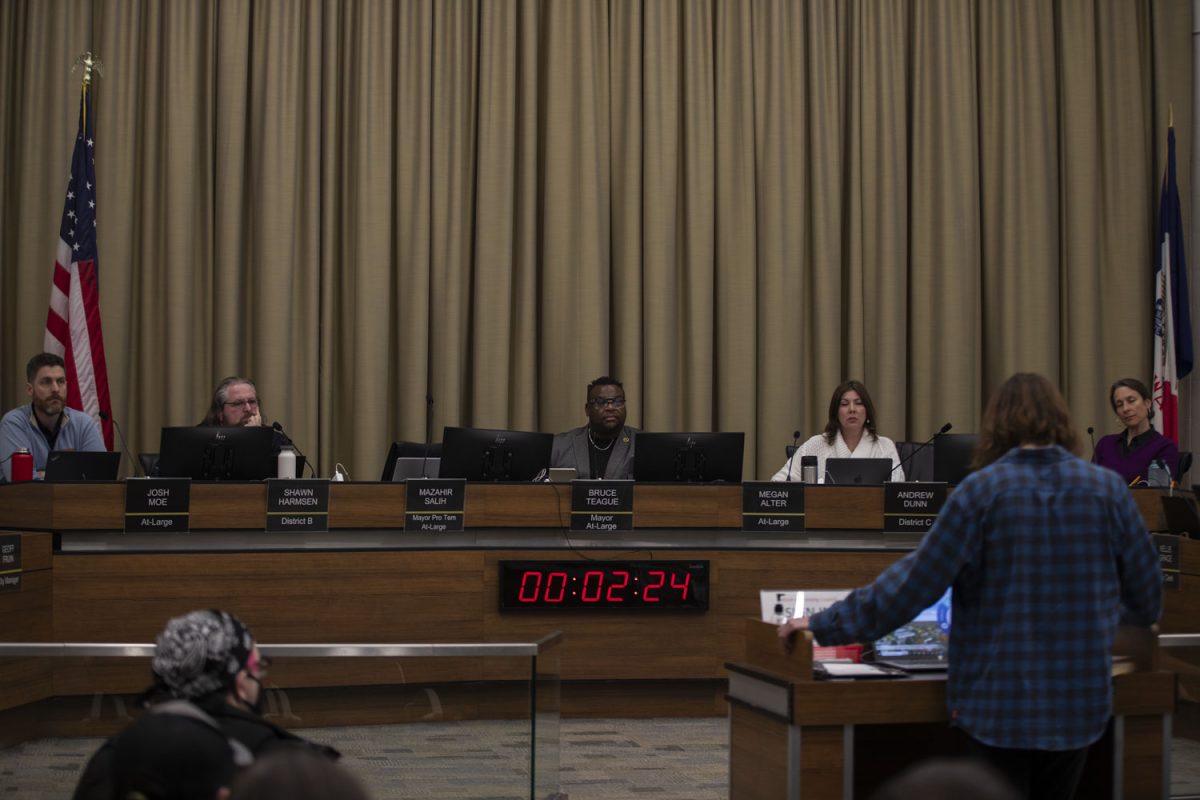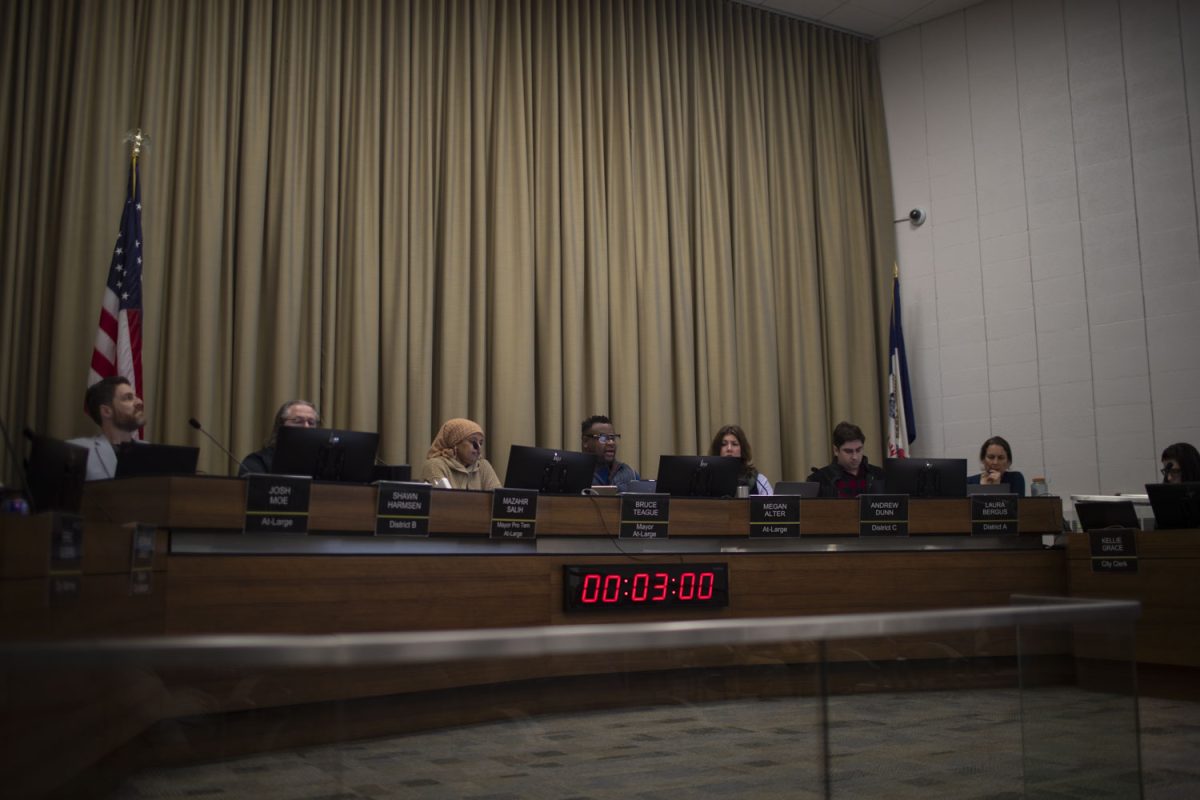By Charles Peckman
Hidden behind the conveyor belts of Hillcrest Marketplace lies the dish room, where food waste is processed. On Wednesday, waste became front and center, offering tangible evidence of the amount produced in the dorms’ dining rooms.
University of Iowa Housing & Dining, with the support of the Office of Sustainability, hosted the “taste, don’t waste” food audit, an event that aimed to show people the consequences of throwing away food.
Three bins were set up and were labeled “edible waste,” “inedible waste,” and “napkin waste.”
Throughout the evening, diners were encouraged to dispose of their waste in the corresponding bins and watch as the weight of each bin rose.
In the first hour of the event, 50 pounds of compostable waste was gathered in the plastic bins.
George McCrory, the communications specialist at the Sustainability Office , offered insight into the food-composting process at UI Housing & Dining.
In 2012, the Hillcrest Marketplace went trayless, which McCrory said was a “huge move for the university. Not only in terms of sustainability but portion size as well.”
According to UI Housing website, going trayless saves approximately $8,000 a year in cleaning supplies.
Hillcrest Marketplace also purchased a food pulper, which processes the food scraps for compost.
The pulper consumes 3,000 pounds of food scraps a week, which adds up to 48 tons of compostable material per year.
Burge Marketplace also has a food pulper, and both dining halls’ advancements are in line with the UI’s 2020 Sustainability Targets.
“It’s great to see UI Housing & Dining taking these steps, and it has [the Office of Sustainability’s] support tonight,” McCrory said.
Lisa Soskin, an assistant manager of Hillcrest Marketplace, said she hopes the event influences students to take only what they can eat.
“[UI Dining] typically sees a lot of food waste toward the beginning of the year, when we have an influx of freshmen who want to try everything,” she said.
But, as the year progresses, Soskin said, the amount of food waste usually declines.
“I think our all-you-can-eat policy is partially to blame for students taking too much food,” she said. “They just have so many options.”
As students made their way to the assorted bins, their faces showed disgust. The food scraps are usually hidden from diners’ sight.
To Noel Mills, a UI student who helped organize the event, this disgust may be a positive.
“When students see the waste, their disgust may help them remember the waste they produce better,” she said. “This may help diners be more cautious about what they take.”
Mills said the program is modeled after University of California-Davis, which held a similar food-audit program.
UC-Davis hosts a food audit every semester, and it has found that the program decreases food waste by 30 percent, reducing the per person waste average from 2.31 ounces per person to 1.6 ounces per person over the course of three years.
Plans for the next food audit are unclear, but Mills said she hopes Wednesday’s event was successful.
“We’ll see what happens; I feel confident, though,” she said.







